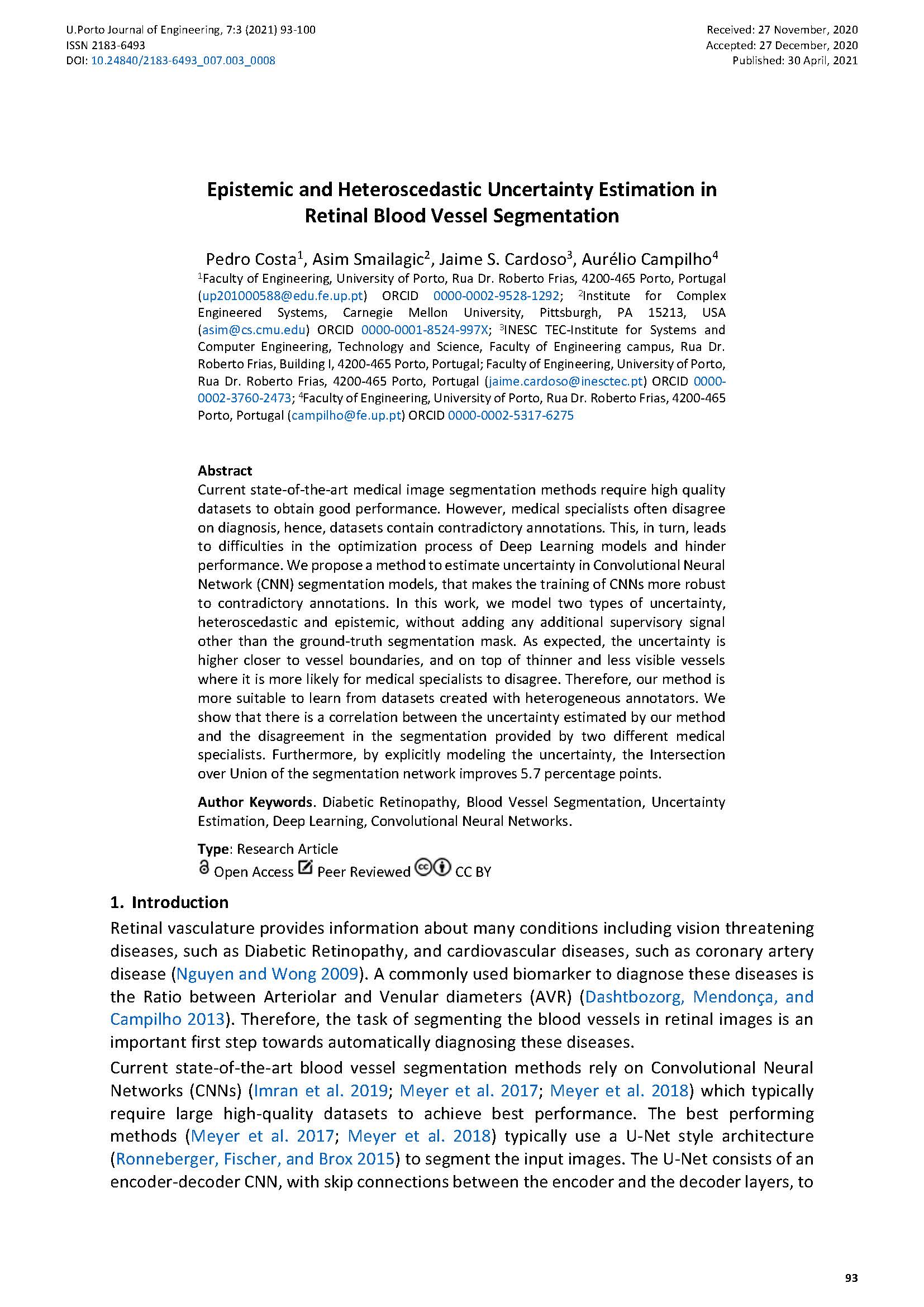Epistemic and Heteroscedastic Uncertainty Estimation in Retinal Blood Vessel Segmentation
Main Article Content
Abstract
Current state-of-the-art medical image segmentation methods require high quality datasets to obtain good performance. However, medical specialists often disagree on diagnosis, hence, datasets contain contradictory annotations. This, in turn, leads to difficulties in the optimization process of Deep Learning models and hinder performance. We propose a method to estimate uncertainty in Convolutional Neural Network (CNN) segmentation models, that makes the training of CNNs more robust to contradictory annotations. In this work, we model two types of uncertainty, heteroscedastic and epistemic, without adding any additional supervisory signal other than the ground-truth segmentation mask. As expected, the uncertainty is higher closer to vessel boundaries, and on top of thinner and less visible vessels where it is more likely for medical specialists to disagree. Therefore, our method is more suitable to learn from datasets created with heterogeneous annotators. We show that there is a correlation between the uncertainty estimated by our method and the disagreement in the segmentation provided by two different medical specialists. Furthermore, by explicitly modeling the uncertainty, the Intersection over Union of the segmentation network improves 5.7 percentage points.
Downloads
Article Details

This work is licensed under a Creative Commons Attribution 4.0 International License.
Authors who publish with this journal agree to the following terms:
- Authors retain copyright and grant the journal right of first publication with the work simultaneously licensed under a Creative Commons Attribution License that allows others to share the work with an acknowledgement of the work's authorship and initial publication in this journal.
- Authors grant the journal the rights to provide the article in all forms and media so the article can be used on the latest technology even after publication and ensure its long-term preservation.
- Authors are able to enter into separate, additional contractual arrangements for the non-exclusive distribution of the journal's published version of the work (e.g., post it to an institutional repository or publish it in a book), with an acknowledgement of its initial publication in this journal.
- Authors are permitted and encouraged to post their work online (e.g., in institutional repositories or on their website) prior to and during the submission process, as it can lead to productive exchanges, as well as earlier and greater citation of published work (See The Effect of Open Access).

